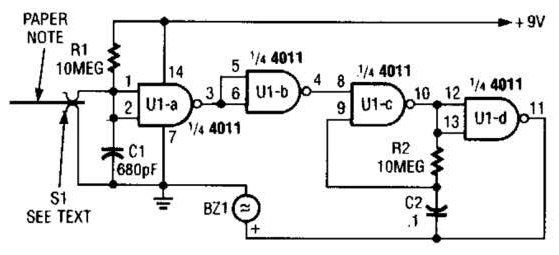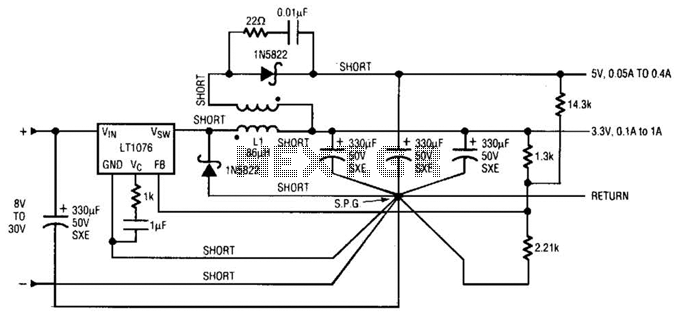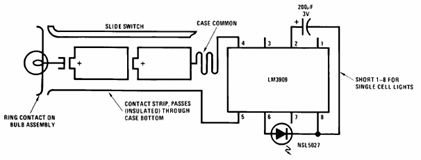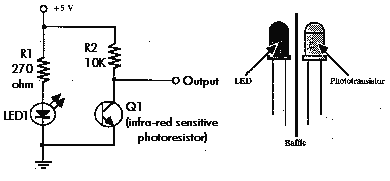
Basic circuit diagram connection of signal and power ISO103
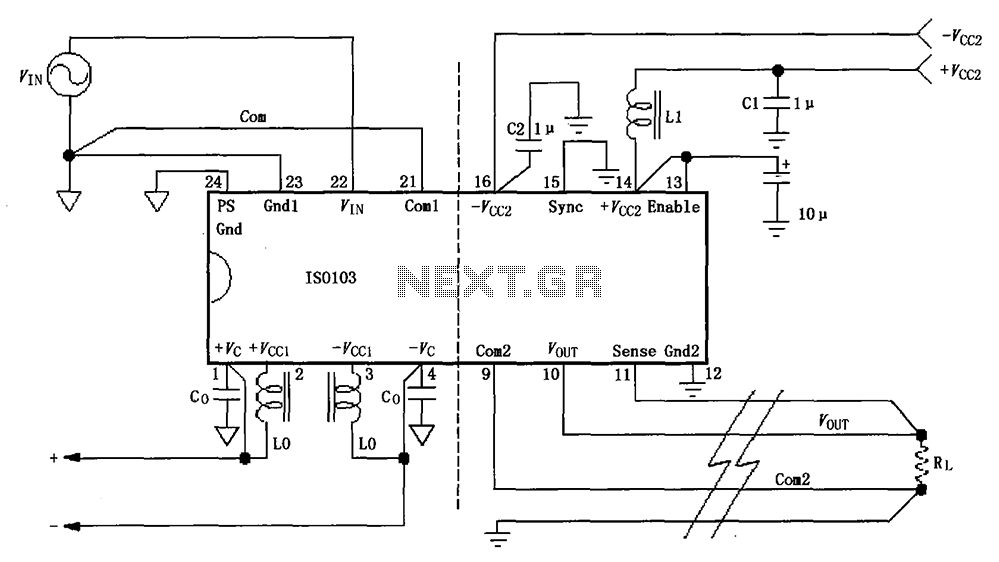
The basic connection circuit for the ISO103 signal and power supply is illustrated. Each power supply terminal must include a bypass filter. If the isolated power supply output current exceeds 15mA, it is advisable to utilize an external filter for the +Vcc2 pin. This type of filter can effectively reduce ripple current, using an inductor L1 with a value of 10 µH. The isolation rectifier output pin (Vcc1) and the amplifier input supply pins (Vc) can be connected to either a ripple filter or a calibrator. The filter element parameters are as follows: for L0 at 10 µH, the capacitance Co should be 1 µF, and for L0 at 10 µH, Co should be 10 µF. TTL logic levels can be achieved by connecting pin 13 to a high state and pin 15 to ground.
The ISO103 is an isolated signal and power supply circuit that requires careful attention to bypass filtering at each power supply terminal to ensure stable operation and minimize noise. The bypass filters are essential for maintaining signal integrity, particularly in applications where high-frequency signals are present. When the output current of the isolated power supply exceeds 15mA, an external filter should be implemented on the +Vcc2 pin to further mitigate ripple effects and stabilize the power supply.
The recommended inductor value of 10 µH for L1 is crucial in forming a low-pass filter that attenuates high-frequency noise. The selection of capacitors is equally important; the values of 1 µF and 10 µF for Co, depending on the specific configuration, help in smoothing out voltage fluctuations and ensuring a stable power supply to the circuit.
The isolation rectifier output (Vcc1) serves as a critical point in the circuit, providing power to the amplifier input supply pins (Vc). Both Vcc1 and Vc can benefit from additional filtering, either through ripple filters or calibrators, to enhance performance.
In terms of TTL logic levels, proper connections are essential for reliable operation. The high state on pin 13 indicates a logical '1', while pin 15 must be tied to ground to establish a reference point for the circuit. This configuration is vital for ensuring that the circuit operates within the specified logic levels and behaves predictably under varying conditions.
Overall, the design considerations outlined above contribute to the reliable functioning of the ISO103 circuit, making it suitable for applications requiring isolated signal and power supply management. As shown for the basic connection circuit ISO103 signal and power supply. Each power supply terminal must have a bypass filter. When isolated power supply output current is gre ater than 15mA, we recommend the use of such power pin of + Vcc2 pin external filter. -type filter can reduce the ripple current, take L1 10 H. Isolation rectifier output pin ( Vcc1) and amplifier input supply pins ( Vc) can be attached to the ripple filter or calibrator. Filter element parameters: When 0 L0 10 H, Co 1 F, when L0 10 H time, Co 10 F. TTL open or take 13 feet high, 15 feet as the ground can not.
The ISO103 is an isolated signal and power supply circuit that requires careful attention to bypass filtering at each power supply terminal to ensure stable operation and minimize noise. The bypass filters are essential for maintaining signal integrity, particularly in applications where high-frequency signals are present. When the output current of the isolated power supply exceeds 15mA, an external filter should be implemented on the +Vcc2 pin to further mitigate ripple effects and stabilize the power supply.
The recommended inductor value of 10 µH for L1 is crucial in forming a low-pass filter that attenuates high-frequency noise. The selection of capacitors is equally important; the values of 1 µF and 10 µF for Co, depending on the specific configuration, help in smoothing out voltage fluctuations and ensuring a stable power supply to the circuit.
The isolation rectifier output (Vcc1) serves as a critical point in the circuit, providing power to the amplifier input supply pins (Vc). Both Vcc1 and Vc can benefit from additional filtering, either through ripple filters or calibrators, to enhance performance.
In terms of TTL logic levels, proper connections are essential for reliable operation. The high state on pin 13 indicates a logical '1', while pin 15 must be tied to ground to establish a reference point for the circuit. This configuration is vital for ensuring that the circuit operates within the specified logic levels and behaves predictably under varying conditions.
Overall, the design considerations outlined above contribute to the reliable functioning of the ISO103 circuit, making it suitable for applications requiring isolated signal and power supply management. As shown for the basic connection circuit ISO103 signal and power supply. Each power supply terminal must have a bypass filter. When isolated power supply output current is gre ater than 15mA, we recommend the use of such power pin of + Vcc2 pin external filter. -type filter can reduce the ripple current, take L1 10 H. Isolation rectifier output pin ( Vcc1) and amplifier input supply pins ( Vc) can be attached to the ripple filter or calibrator. Filter element parameters: When 0 L0 10 H, Co 1 F, when L0 10 H time, Co 10 F. TTL open or take 13 feet high, 15 feet as the ground can not.

